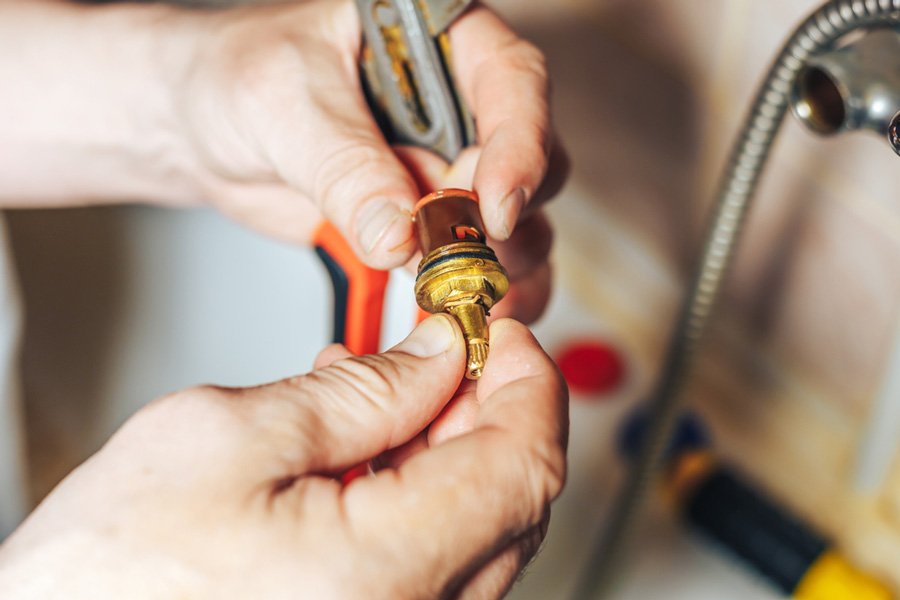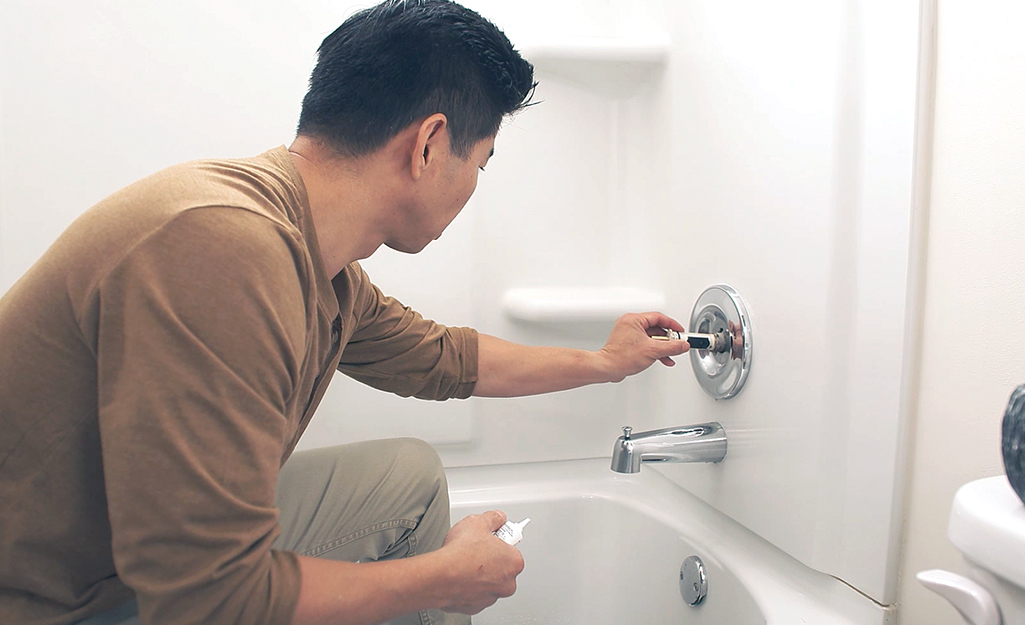When It's Vital to Fix a Leaking Faucet
When It's Vital to Fix a Leaking Faucet
Blog Article
What're your insights and beliefs on What Causes Leaky Faucets & How To Fix Them?

Trickling faucets may appear like a small aggravation, yet their effect goes beyond simply the inconvenience of the audio. From drainage to incurring unneeded financial costs and health and wellness risks, ignoring a leaking tap can cause various repercussions. In this write-up, we'll look into why it's crucial to address this typical family issue promptly and successfully.
Wastage of Water
Ecological Effect
Leaking faucets add dramatically to water wastefulness. According to the Environmental Protection Agency (EPA), a solitary faucet trickling at one drip per secondly can lose greater than 3,000 gallons of water annually. This not only strains water resources but likewise influences environments and wildlife depending on them.
Financial Expenses
Raised Water Costs
Beyond the environmental effect, leaking faucets can blow up water expenses significantly. The accumulated wastefulness in time translates right into higher energy expenses, which can have been avoided with prompt repair work.
Possible Building Damage
In addition, prolonged leaking can bring about damage to components and surfaces bordering the tap. Water accumulation can trigger discoloration, deterioration, and even structural problems if left neglected, resulting in added repair expenses.
Health and wellness Concerns
Mold and Mold Development
The continuous visibility of dampness from a trickling tap develops an ideal environment for mold and mildew and mold development. These fungis not just compromise indoor air quality yet additionally posture wellness dangers, especially for individuals with respiratory system problems or allergic reactions.
Waterborne Illness
Stagnant water in trickling faucets can become a breeding ground for bacteria and various other microorganisms, increasing the threat of waterborne illness. Contaminants such as Legionella microorganisms flourish in stationary water, possibly leading to severe diseases when consumed or inhaled.
DIY vs. Expert Repair
Benefits and drawbacks of Do It Yourself Fixing
While some may attempt to fix a trickling tap themselves, do it yourself fixings include their very own set of obstacles. Without appropriate expertise and devices, do it yourself efforts can exacerbate the concern or lead to insufficient repair services, prolonging the trouble.
Advantages of Hiring a Specialist Plumber
Employing a specialist plumber ensures that the underlying reason for the dripping faucet is addressed efficiently. Plumbers have the proficiency and equipment to diagnose and fix faucet issues effectively, conserving time and minimizing the risk of additional damages.
Step-by-Step Guide to Dealing With a Dripping Tap
Devices Called for
Prior to trying to fix a dripping faucet, collect the essential tools, including an adjustable wrench, screwdrivers, substitute components (such as washing machines or cartridges), and plumber's tape.
Usual Tap Issues and Their Solutions
Determine the kind of faucet and the specific issue creating the drip. Typical issues include damaged washers, corroded shutoff seats, or damaged O-rings. Refer to manufacturer guidelines or on the internet tutorials for step-by-step advice on repair services.
Preventive Measures
Normal Maintenance Tips
To stop dripping taps, perform regular maintenance such as cleaning up aerators, inspecting for leaks, and changing worn-out components promptly. Furthermore, take into consideration installing water-saving gadgets or updating to extra effective fixtures.
Value of Prompt Repair Works
Resolving leaking faucets as soon as they're seen stops more water wastage and potential damages, eventually saving both water and money in the long run.
Effect On Property Worth
Assumption of Well-Maintained Residential Property
Maintaining a home in good condition, including attending to maintenance concerns like dripping taps, boosts its perceived worth and desirability among possible buyers or occupants.
Impact on Resale Value
Qualities with well-maintained plumbing fixtures, including taps, command higher resale worths in the property market. Addressing dripping faucets can contribute to a positive perception throughout building inspections and negotiations.
Environmental Responsibility
Individual Contribution to Conservation
Taking responsibility for fixing dripping taps straightens with wider efforts toward water conservation and ecological sustainability. Every person's activities jointly make a significant impact on protecting valuable sources.
Lasting Living Practices
By focusing on punctual fixings and taking on water-saving habits, individuals contribute to sustainable living practices that benefit both present and future generations.
Final thought
Dealing with a dripping faucet surpasses plain comfort; it's a necessary action toward conserving water, lowering economic prices, and securing health and wellness and residential or commercial property. Whether through do it yourself repair work or professional aid, doing something about it to take care of leaking taps is a little yet impactful way to advertise accountable stewardship of resources and contribute to a much healthier, much more lasting future.
Most Common Reasons for a Leaky Faucet and How to Stop the Drip
Whether it’s your kitchen faucet leaking or a bathroom faucet leaking, one leaky faucet can waste anywhere from three to 30 gallons of water every single day. If the constant drip-drip-drip doesn’t get your attention, your water bill will. The good news is that, by following a few simple steps, chances are pretty good you can fix the problem yourself.
Why is it dripping?
Before you start taking things apart, let’s break down some of the most common causes of a leaky faucet.
Bad O-ring.
A cartridge is a valve that controls the flow of water into the faucet spout. On cartridge faucets there’s an O-ring—the little disc attached to the stem screw that holds the faucet handle in place. If it’s loose or worn-out, it can cause your sink handle to leak. Of course, the cartridge itself could be worn out. If that’s the case, make sure you replace it with the exact same kind.
Corroded valve seat.
The valve seat connects the faucet and the spout. If the leak seems to be coming from the spout, it might be because a buildup of water sediment has corroded the valve seat.
Worn-out washers or seals.
A leaky spout could be caused by a bad washer that rests against the valve seat. It’s just a matter of time before friction takes its toll. It could also be the wrong size washer or one that’s been installed incorrectly. Water sediments can also corrode inlet and outlet seals.
Water pressure.
If the faucet only drips now and then, or when you turn the handles a certain way, you should probably check your home’s water pressure.
Loose or broken parts.
The adjusting ring and packing nuts in the stream screw can become loose over time, causing your sink handle to leak. Try tightening or replacing the packing nut. If the leak is coming from the pipes underneath the sink, you probably have a broken pipe or fitting. If that’s the case, you should definitely call a plumber.
Know your faucet.
Faucets come in a variety of types. Each one has its own assembly—and its own possible causes of leaks. Learning about the four most common kinds of faucets will help you know how to take them apart and make any repairs.
How to stop a leaky faucet
Fixing that leaky faucet doesn’t have to take a lot of time, money, or expertise. It’s usually a simple matter of replacing a worn-out washer or gasket, a loose O ring, or another part. Chances are really good you can do this yourself if you follow these simple steps.
Shut off the water.
Before you tackle the faucet, cut off the water supply to the sink. There should be one valve for hot and one for cold. Hand-turn them clockwise with your hands till they close. If there are no valves under the sink, head to the basement and shut off the main water supply to the house. Then turn on the faucet until it empties out the water that’s still in the line and you’re ready to start. It’s a good idea to cover the sink drain with a plug or a rag so you don’t lose any small pieces and parts while you’re working.

I was brought to that editorial on 4 Common Reasons for a Leaky Faucet from a buddy on a different web address. Are you aware of another person who is intrigued by 4 Common Reasons for a Leaky Faucet? Please feel free to promote it. Thanks for taking the time to read it.
Report this page